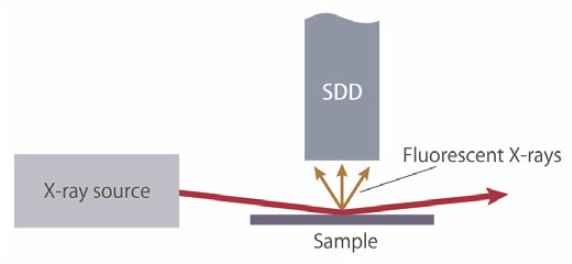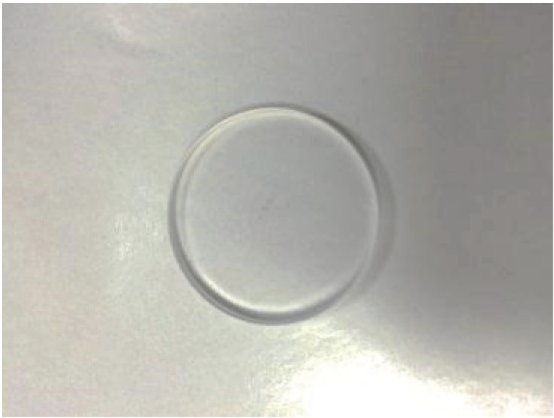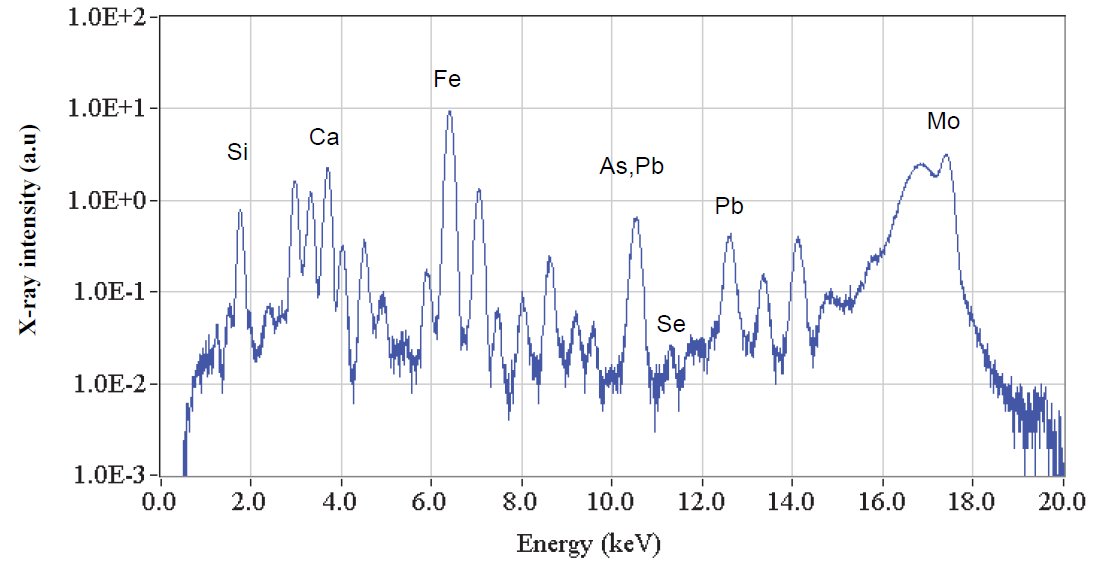Analysis of an Ultrasmall Amount of Powder
Introduction
An incident X-ray beam impinges upon the sample at a shallow angle resulting in virtually complete reflection of the excitation beam away from the silicon drift detector (Figure 1). This affords dramatically reduced background contributions in the measured energy dispersive X-ray fluorescence spectra. It is possible to measure powder on the substrate without any water or adhesive due to the horizontal substrate setting.

Figure 1: TXRF principle
Measurement and results
It is possible to measure small amount of the powder sample with high sensitivity by TXRF spectrometer. Easy sample preparation is provided just the sample set on the substrate such as glass disk.
High sensitivity analysis of small amounts of powder can be done by a TXRF spectrometer much more easily than by a general XRF spectrometer. The sample for the measurement stays on the substrate, because the horizontal sample setting is employed in NANOHUNTER II (Figure 2). Water or adhesive is not required to affix the sample to the substrate disk. Only the information from the sample can be detected without any interference.
 Figure 2: 50 µg powder on glass disk
Figure 2: 50 µg powder on glass disk
The ultra-small amount (50 µg) of the soil standard sample, SRM2711: Montana soil, is put on the glass disk and the result is shown in Figure 3 The ppb level elements such as As, Se and Pb are detected as well as major elements such as Si, Ca and Fe. Measured powder was retrieved after measurement.

Figure 3: Spectrum of the ultra-small powder sample (50 µg)

Contact Us
Whether you're interested in getting a quote, want a demo, need technical support, or simply have a question, we're here to help.
